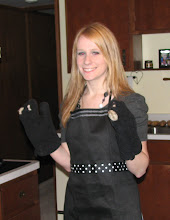Tuesday, April 14, 2009
Recommendations
Enora Brown provides us with the list of recommendations from the Turning Points report in 2000. While reading through these seven recommendations, I find that I agree with all of them. They are all great ideas and would improve the educational system in this country. The problem I have is that these recommendations are not followed up by any suggestions as to how an educator can implement these things on a day to day basis. This is a problem I have frequently run into during my short time teaching so far. My cooperating teacher complains of this as well. The district administrators will present ideas or recommendations for improving the education of the students, but will never tell teachers how to carry these ideas out in the classroom. We find ourselves sitting there and agreeing whole-heartedly with all of the suggestions presented. We will leave the meeting with a great feeling of accomplishment. But then the more you think about it, it becomes clear that you have idea how to achieve these goals. This is why I really appreciated Chapter 29. Eric Gutstein provides a specific way in which he used math to teach social justice in his classroom. Granted, I will not necessarily be able to use his exact ideas because I do not teach math. But those who do teach math could definitely take a lesson from this guy. I hope that more educators share their stories like this so that we can have ideas on how to better educate our students and implement new ideas in the classroom.
Subscribe to:
Post Comments (Atom)

I couldn't agree more with your thoughts on how to implement all of the goals that are created to help students. It seems as though there is more emphasis put on creating great goals instead of how to realize these goals. Coming up with ideas I think is the easy part, implementing them is very difficult. Especially in a classroom as it is often filled with diverse children with different experiences. There is no cookie cutter mold on how to realize these great goals in order to help our students and that needs to be understood first.
ReplyDelete